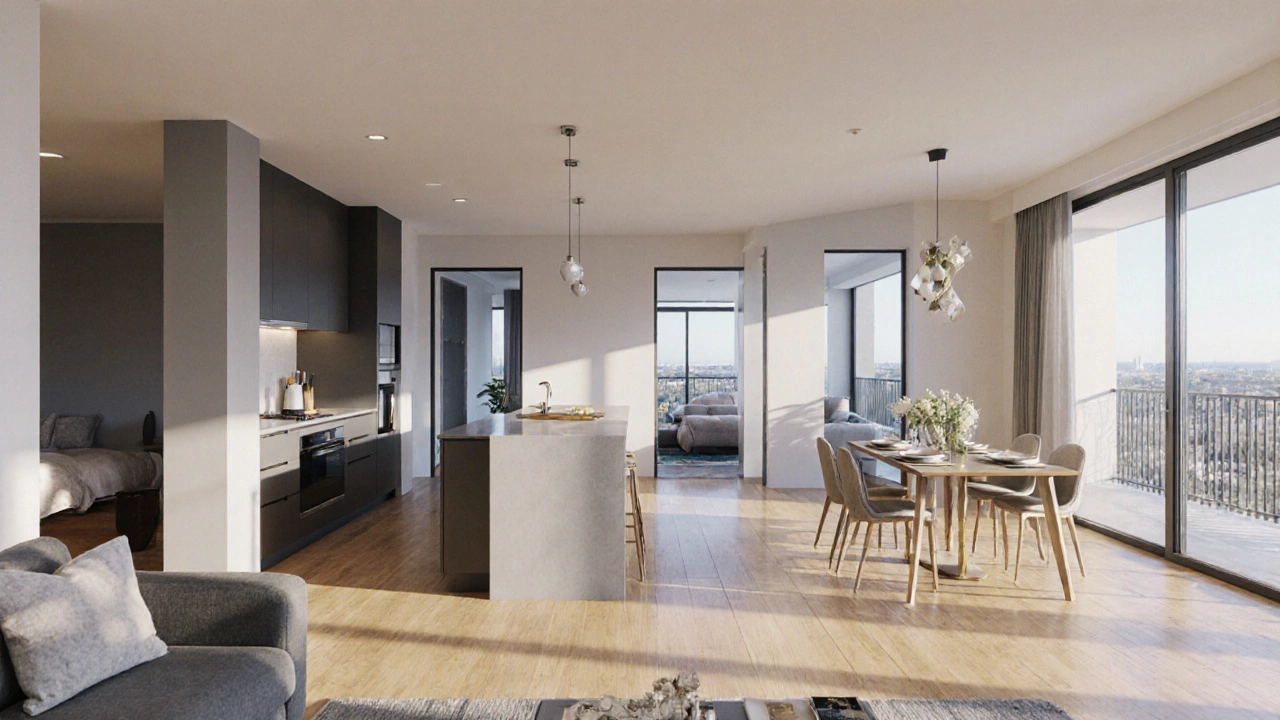Melbourne apartments – your go‑to guide
When exploring Melbourne apartments, residential units located in Melbourne’s urban districts, ranging from studio flats to multi‑bedroom suites. Also known as Melbourne flats, they cater to students, professionals, and families seeking city life.
If you’re searching for Melbourne apartments, you’ll want to know how they intersect with three key ideas: compact living, apartment size, and the rental market.
Compact living – making small spaces work
Compact living, the practice of maximizing functionality in small floor plans has become a must‑know skill for anyone signing a lease in the inner suburbs. It involves clever furniture placement, built‑in storage, and flexible zones. By mastering compact living, renters can enjoy a tidy home without feeling cramped. Melbourne apartments encompass compact living solutions, so the more you understand space‑saving tricks, the better your day‑to‑day experience will be.
Key attributes of compact living include modular furniture, multi‑purpose rooms, and visual continuity. When you choose a unit that supports these, you reduce clutter, save time, and keep your energy bills low because you’re not heating an excessively large area.
Apartment size, the total square footage of a rental unit, typically measured from wall to wall drives both cost and lifestyle. A 400 sq ft studio may suit a single professional, while a 600 sq ft two‑bedroom appeals to small families. Understanding how size affects rent, utilities, and comfort helps you pick the right match. Compact living requires smart space planning, and that planning changes depending on whether you have 400 sq ft or 800 sq ft to work with.
Smaller units often come with lower rent, but they may lack separate zones for work or hobbies. Larger units give flexibility but can increase heating costs. The sweet spot for most Melbourne renters sits between 450 sq ft and 650 sq ft, offering enough room for a bedroom, a modest living area, and enough storage to avoid clutter.
Rental market, the supply and demand dynamics for leasing residential property in a city in Melbourne shifts with employment trends, student influxes, and seasonal tourism. Recent data shows a 5 % rise in average rent for one‑bedrooms over the past year, and new build projects are adding hundreds of units to the inner‑city supply. Knowing market pressure lets you negotiate better lease terms. Rental market influences apartment size choices because developers respond to demand for smaller, affordable units when prices climb.
When the market tightens, landlords may prioritize tenants with strong credit or longer lease commitments. Conversely, a softer market can give renters leverage for rent reductions or upgraded amenities. Staying aware of these cycles helps you time your move and secure the best deal.
Beyond size and price, you’ll also encounter topics like property taxes, lease clauses, and investment potential. All of these pieces fit together to form a complete picture of what it’s like to live in a Melbourne apartment today.
Below, you’ll find a curated collection of articles that dive deeper into each of these areas – from 400 sq ft layout ideas to the latest rent‑increase rules in Melbourne’s suburbs. Use them to sharpen your search, compare options, and make an informed decision about your next home.
Understanding 3SLDK Apartments: Definition, Layout & Buying Guide
by Arjun Mehta Oct 11 2025 0 ApartmentsDiscover what a 3SLDK apartment is, its layout, benefits, market trends, and a buyer's checklist for Melbourne properties.
READ MORE